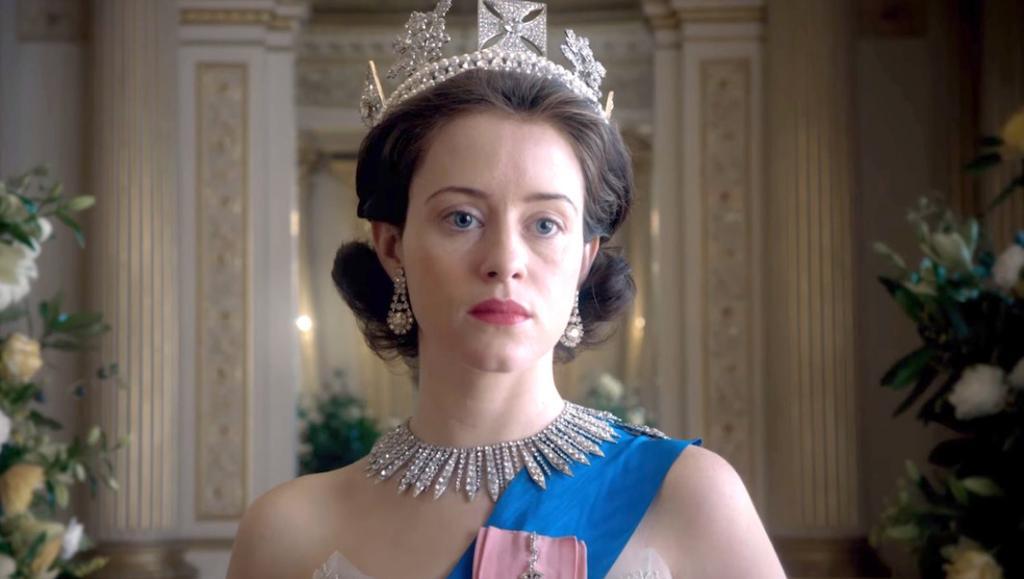To See or Not to See: Netflix’s The Crown

The Crown, Netflix‘s exploration of the modern British monarchy, is the streaming service’s most expensive and eagerly anticipated new series. The brainchild of Stephen Daldry and Peter Morgan, the show centers on Queen Elizabeth II, and each season will focus on a decade of her long reign.
Boasting a brilliant cast, lavish costumes, and fantastic directing, The Crown is an intricate drama of the highest order, and it is sure to add a few awards to Netflix’s trophy case. Indeed, if there’s anyone whom we should trust with the story of Queen Elizabeth II, it’s Peter Morgan, the show’s creator. His attempts to fictionalize and explain her unique position resulted in the Oscar-winning film The Queen and Tony- and Olivier-winning play The Audience, both of which starred Helen Mirren. The Crown stands apart from these two previous forays into Windsorland by focusing on Queen Elizabeth’s early years. The Crown dramatizes her wedding to Prince Phillip, her coronation, and her struggles to juggle her (sometimes conflicting) roles as a queen, wife, mother, and sister. Everything doesn’t always come up roses for this iconic queen: her marriage goes through periods of ups and downs; she appears a distant mother; and the nature of her position means that she often alienates the people for whom she cares the most.
The Crown joins a horde of other royal biopics that attempt to pull back the curtain on the dilemma of public duty versus private life– it’s a theme in royal films ranging from Roman Holiday to Elizabeth, The Young Victoria, and Mrs. Brown. The Crown also joins these celebrated films in humanizing the monarchy and highlighting the personal costs of regal duty. The Crown establishes its human-centered approach immediately. The first shot isn’t of Queen Elizabeth II or the pomp and circumstance of monarchy; instead, it’s of her father King George VI humbly retching into a toilet, and we see specks of blood in his very un-royal bile. The anointed, divinely-ordained king is painfully, unavoidably mortal. We continue to catch glimpses of this conflict between the human and the inhuman throughout The Crown‘s freshman season.
Let’s be clear: The Crown is a gorgeous, well appointed production. It is lovingly, expertly crafted in the tradition of the best historical drama. Giants like Sir Winston Churchill, King George VI, and Wallis Simpson become flesh-and-blood human beings who are captivating, engaging, and hopelessly, breathtakingly flawed. Morgan has made Wikipedia-able history fresh, exhilarating, and dramatic. We see how Elizabeth’s coronation became the first to be televised; we learn about the Great Smog of 1952; we witness empire’s demise; and the season ends with the Suez Crisis of 1956.
Oddly, if there is one flaw in this production, it’s the Queen herself– The Crown has an Elizabeth problem. For a show that ostensibly centers on Queen Elizabeth II, it spends very little time developing her as a character. Sure, the film’s central theme is clear: Elizabeth must learn to become less of an individual and more of a symbol, and there is no room for The Personal in monarchy. So, Elizabeth must put “the crown” and the institution it represents before all personal relationships. Yet, the show fails to give us a starting point– we never truly get a sense of who she is as a person. From the beginning, she is given no emotional inner world. Consequently, the impact of her journey is blunted, since we get no hints at how her inner world is affected by the weight of the crown. We know how it affects her exterior relationships– as a wife, sister, and daughter– but not the interior life of Elizabeth the Person. What makes her happy? What makes her laugh? What do her friends like about her? What is her biggest fear? We get some answers about many of the characters, but never fully about Elizabeth. She is defined entirely by her relationship to other people.
In some ways, then, this television show succeeds at humanizing everyone in the beehive, except the Queen Bee. Indeed, all of the other major characters in this production are better drawn than Elizabeth, and we get thrilling, intimate glimpses into their inner lives. In a vaguely Shakespearean way, Tragedy lurks over the shoulder of virtually every character. Princess Margaret is an insecure, dazzling young woman who can charm her way anywhere, except into marriage– she loves dancing, booze, and the spotlight. Philip is an outsider who feels resentful that his masculinity has been challenged by his wife’s royal duties– he likes flying, spending time with his children, and carousing with friends. Winston Churchill is a shadow of the man he once was– and we get a beautiful scene where he remembers a lost child. Elizabeth is a young woman thrust into an overwhelming role and tries to meet it with dignity– she likes horses, maybe? Corgis appear a few times. And that’s about it.
Furthermore, this entire first season positions her as someone who is essentially weak-willed and ineffectual. Though Elizabeth has flashes of independence and, at times, a stubborn streak, she comes across most consistently as easily swayed as she is pulled in many different directions. She is always man-handled, either by male secretaries who are sticklers for precedent or Prime Ministers who man-splain “how things are done.” I trust that this is part of her arc, and I sincerely hope in future seasons Elizabeth carves out more autonomy.
Despite the limited spectrum the writers gave the character Elizabeth, Claire Foy makes the most of it and communicates through steely stares, wounded glances, tight jaws, and anxious fiddling. Her Elizabeth is a revelation of cool, measured control.
Indeed, the entire cast is pitch perfect. Vanessa Kirby as Margaret is all heart and tragedy. Matt Smith as Prince Philip is a maddening, entitled, and disgruntled husband who throws more tantrums than his young children. In one of his best performances to date, John Lithgow is surprisingly fantastic as Winston Churchill, who is wheezy, bloated, and laboring under the burdens of decades of responsibility. Eileen Atkins is an icily perfect Dowager Queen Mary. Alex Jennings is a preening, embittered, and perfectly vain David (the brief Edward VIII). Victoria Hamilton— who, having played Queen Victoria in 2001’s Victoria and Albert, has her own queenly cred– is an able Queen Mother. Each of these characters become more interesting as the season progresses. All, that is, except Elizabeth, who seems oddly one-note and as unchanging as the crown she wears.
The stand-out is indisputably Jared Harris, who delivers a heartbreaking performance as the dying George VI. An unexpected king, he led his nation through World War II, and made it to the other side of the war only to succumb to lung cancer. One of the most affecting scenes of the whole show came in the first episode, when carol-singers give him a papier-mâché crown. As he joins them in a moving rendition of “In the Bleak Midwinter,” tears fill his eyes as he comes to terms with his mortality.
That’s what this show is all about: it emphasizes that a heavy, bejeweled crown sits atop a very human head. This show is at its best in simple moments that reveal the humanity behind the magic of monarchy. Though this production has flashes of greatness, I wish it had spent a little less time dressing Elizabeth to perfection, and a little more time giving her a personality fit for queen.
Photo Credit: Netflix


Discussion about this post